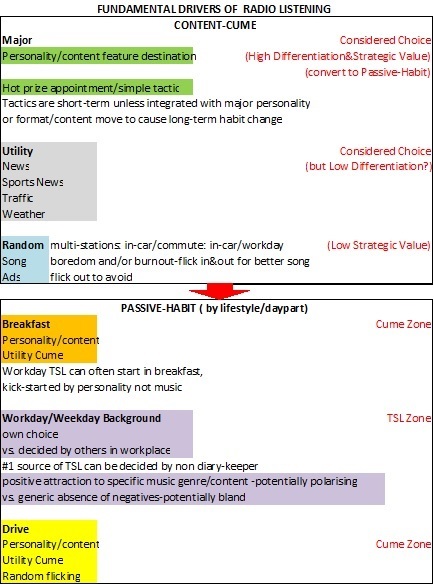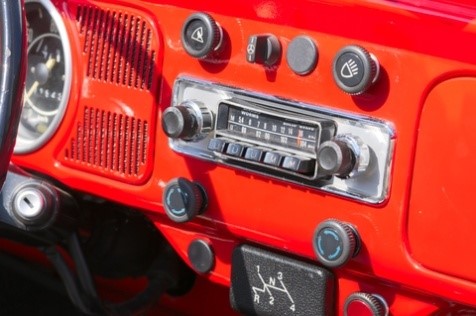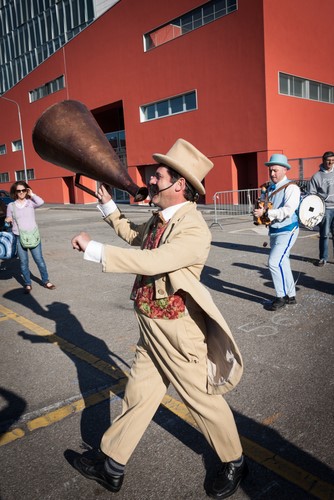Strategy Playbook: #2 Content-Cume vs. Passive-Habit

Last time, I kicked off this new series on the fundamentals of programming strategy, with Ratings Realities.
How to lay your strategic foundation, by understanding the real drivers of our ratings methodologies in Australia & NZ. "Win breakfast, win the day" means the #1 goal is attracting cume (cumulative audience/reach) from breakfast & heavy listeners in your target.
The next step is identifying how your particular format and competitive situation is affected by Content-Cume vs. Passive-Habit, and understanding why TV campaigns & big contest prizes may not work!
Beyond winning breakfast, a big enough mountain to climb as it is, you're faced with a wide range of options on how best to spend your hard-won, crawling on broken-glass, programming & marketing budget.
"We have to be on TV", giveaway big cash, target the workday, run ad-free, drop all the polarising songs-just play the safest testers, make news & traffic our point-of-difference, are examples of traditional tactics to affect the next survey.

And there can be positive effects from any of those, but there's also a major risk of low ROI, and only short-term "noise", that does nothing to change the long-term Cue-Routine-Reward Loop.
The Challenge with Radio …
And the most fundamental trap for old & new players, is reconciling radio's conflicting duality of both large amounts of constantly changing cume, some random & fickle AND ingrained, hard to shift habit listening.
Ignoring or misunderstanding the influence of one or the other, is the path to ratings disappointment, as is spreading your resources so thinly to cover it all, that you lose focus.
Here are some insights on how to prioritise what you resource. Everything you do on and off-air should, of course, be well executed, but focus & differentiate you must (Yoda).

Content-Cume
- Is made up of many different shadings, with widely varying strategic value.
- Personality & content destinations are the big cume wins, as they are conscious “Considered Choices”, which can be converted into long-term habit.
- Hot-prize appointments however, are only short-term sizzle, and have to work really hard at being habit-converters. Unless integrated with deeper personality/content, brand values, or positioning moves that are genuine game-changers.
- Utility-Cume such as news/sport/traffic/weather can often be Considered and habitual: a great mobile strength of radio. But difficult for differentiation, as you can find that information not just on any station, but also your smartphone. I discussed practical solutions here.
- Random-Cume is large in quantity, but low on quality in terms of actionable value.
- Channel-surfing in-car is very functional, and a lot less to do with station branding, than boredom and instant gratification. Though you do need branding to get on the presets in the first place.

- People can have a surprising variety of stations on their preset “menu”, and will punch out of songs they don’t like /tired of/ already heard a short time ago, content that rambles on, over-messaged promos that go on too long, and ads. Just the same experience as PPM (Portable People Meter) ratings.
- Those whose workplace is a vehicle, are far from passive, and have just as short attention spans, affecting workday TSL. In-car cume to radio is quite consistent through the weekday daytime.
Passive-Habit
- Cume still plays a large role in Passive-Habit. Even though the concept suggests longer TSL.
- Breakfast is the prime-time, make-or-break daypart for radio, and it’s all about Cume (from Heavy Listeners).
- TSL is a natural flow-on from an engaging breakfast show with daily habit usage.
- Habit is measurable, and the best performing shows have high KPIs.
- However you can’t change people’s morning rush lifestyle, and get them to listen longer.
- Utility-Cume just for information is useful , but they’re often very light listeners, and not as engaged.
- Breakfast performance also greatly affects the workday TSL Zone, as workplace diary-keeping can often start within the breakfast Cume Zone.

- A further complication is that some listeners don’t get to choose their workplace station. Instead, someone else or a group consensus decides where all of that individual’s diary-keeping is going. And again, could be based on breakfast preference!
- Individualised online streaming might be an option in white-collar environments, and could now be affecting online survey-diaries.
- “Chasing the consensus” poses a further dilemma of either creating a more defined music genre/mix (or talk content) that's potentially polarising, but better for overall brand differentiation OR going for a more generic, potentially bland, absence-of-negatives approach that will dilute differentiation.
- More satisfaction for a smaller number of people vs. less satisfaction for a wider group. Going deep OR shallow is an enduring programming debate.
- Afternoon Drive is another Cume Zone of listeners burnt by the day, looking for light relief and essential information. Habit again best formed by personality & content, surrounded by lots of Utility and Random Cume.
Strategic Implications
- This reinforces the importance of constantly stimulating Cume.
- Most of the key drivers are about how many “bums-on-seats”, not how long they stay there. As long as they come back tomorrow, and the day after, and habitually keep coming back for more.
- The longest TSL Zone in the workday, is still fragile, and can be heavily influenced by the breakfast choice and/or other people.
- The dominant features of radio usage in the fragmented media environment are instant gratification and short attention spans.
- The win is converting Content-Cume to Passive-Habit.
Strategy Playbook Recommendations
- Start by pulling your programming content apart, to decide which elements have High Differentiation & Strategic Value, and which, however well-executed, are Low D&S Value.
- What do your listeners, and those in your competitive-set regard as important must-haves in their favourite station? And who do they think does the best job of delivering those? You might be doing a great execution of something of low importance to your target.

- This will vary by format, target audience, competitive situation and market, so don't make assumptions based on all those well-worn radio sayings and myths & legends. Do due diligence on your specific situation. Also essential for marketing plans (see below).
- You must decide whether you're in the game of positive attraction to a specific talk content or music genre/mix, that can polarise, but also differentiate OR are you there to deliver a bland, generic absence of negatives product in the hope of attracting a wider audience.
- For instance, going after that elusive 25-54 householder shopper format for sales! If only programmers were smart enough to deliver the Holy Grail :-), instead of stuffing around with niche formats we can't sell.
- Marketing is a minefield! To justify the budget, major campaigns must have a longer-term objective than just winning the next book. "Throwing money at a survey" is the same as aiming it at a certain receptacle.
- The marketing warfare expression "plan calmly and attack with emotion (creativity)" is made for radio, where planning can be emotional, and last-minute, without sufficient pre-analysis of what you're really trying to achieve
- In what ways will the campaign/promotion reinforce or change listener perceptions of your High Differentiation & Strategic Value programming elements and position, as you identified in the first step (above)? How will it change ingrained listening habits?

- You can't just make a big noise, while tossing bright shiny objects into the crowd for short-term popularity like a politician. When the BSOs run out, so does the crowd, the next ratings drop, and you're no further ahead in brand-building than when you started.
- This applies just as much to social media or traditional + SM campaigns, which might have lots of buzz, colour & movement, but not enough focus and accountability for the real outcomes.
Strategy Playbook #3 will ask Did Your Marketing "Work", and explore how to plan your campaign to match your brand values and long-term objectives.
Eriks Celmins is Managing Director of Third Wave Media and InsiderFocus, consultant for research, strategy and content. Find out more here.
Find him on LinkedIn



